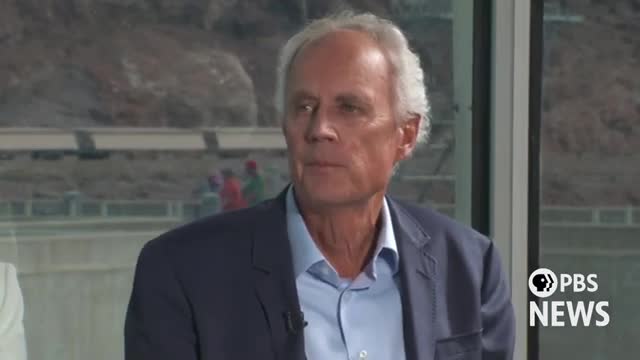Water Crisis Negotiations Intensify Amidst Scarcity Challenges

This article was created by AI summarizing key points discussed. AI makes mistakes, so for full details and context, please refer to the video of the full meeting. Please report any errors so we can fix them. Report an error »

In a recent government meeting, officials discussed the pressing need for a 20% reduction in water usage across seven states, driven by overuse and ongoing water shortages. The conversation highlighted the complexities of implementing these cuts, particularly regarding who will bear the burden and how the reductions will be distributed among the states.
Participants emphasized that while conservation efforts could mathematically achieve the necessary reductions, the real challenge lies in the negotiations among the states. The discussions underscored the importance of a comprehensive agreement that not only addresses water demand but also integrates environmental protection and resilience-building measures.
One potential solution raised was the exploration of water desalination, which has seen mixed success globally. Experts noted that while desalination could be part of a broader strategy to manage water resources, it requires careful planning and significant investment. The need for sustainable energy sources to power desalination plants without exacerbating carbon emissions was also highlighted.
The meeting also delved into the dynamics between the Upper and Lower Basin states, with Upper Basin representatives expressing frustration over the lack of equitable discussions regarding water shortages. They argued that the Lower Basin should take the first cuts due to their access to large reservoirs, which have been drawn down by increased demand.
The Lower Basin states have already made substantial reductions in water usage, decreasing from 7.5 million acre-feet to 5.8 million acre-feet. However, there remains a call for the Upper Basin to engage in negotiations to ensure a fair distribution of future cuts.
The federal government’s role in facilitating these discussions was also a focal point, with officials acknowledging the historical importance of federal leadership in past agreements. As the federal government prepares to develop new operational guidelines by the end of 2026, there is a growing concern that without a collaborative state-level agreement, federal intervention may become necessary—a prospect that many stakeholders wish to avoid.
Overall, the meeting underscored the urgent need for cooperation among states to address water scarcity while balancing environmental and economic considerations.
Participants emphasized that while conservation efforts could mathematically achieve the necessary reductions, the real challenge lies in the negotiations among the states. The discussions underscored the importance of a comprehensive agreement that not only addresses water demand but also integrates environmental protection and resilience-building measures.
One potential solution raised was the exploration of water desalination, which has seen mixed success globally. Experts noted that while desalination could be part of a broader strategy to manage water resources, it requires careful planning and significant investment. The need for sustainable energy sources to power desalination plants without exacerbating carbon emissions was also highlighted.
The meeting also delved into the dynamics between the Upper and Lower Basin states, with Upper Basin representatives expressing frustration over the lack of equitable discussions regarding water shortages. They argued that the Lower Basin should take the first cuts due to their access to large reservoirs, which have been drawn down by increased demand.
The Lower Basin states have already made substantial reductions in water usage, decreasing from 7.5 million acre-feet to 5.8 million acre-feet. However, there remains a call for the Upper Basin to engage in negotiations to ensure a fair distribution of future cuts.
The federal government’s role in facilitating these discussions was also a focal point, with officials acknowledging the historical importance of federal leadership in past agreements. As the federal government prepares to develop new operational guidelines by the end of 2026, there is a growing concern that without a collaborative state-level agreement, federal intervention may become necessary—a prospect that many stakeholders wish to avoid.
Overall, the meeting underscored the urgent need for cooperation among states to address water scarcity while balancing environmental and economic considerations.
View full meeting
This article is based on a recent meeting—watch the full video and explore the complete transcript for deeper insights into the discussion.
View full meeting